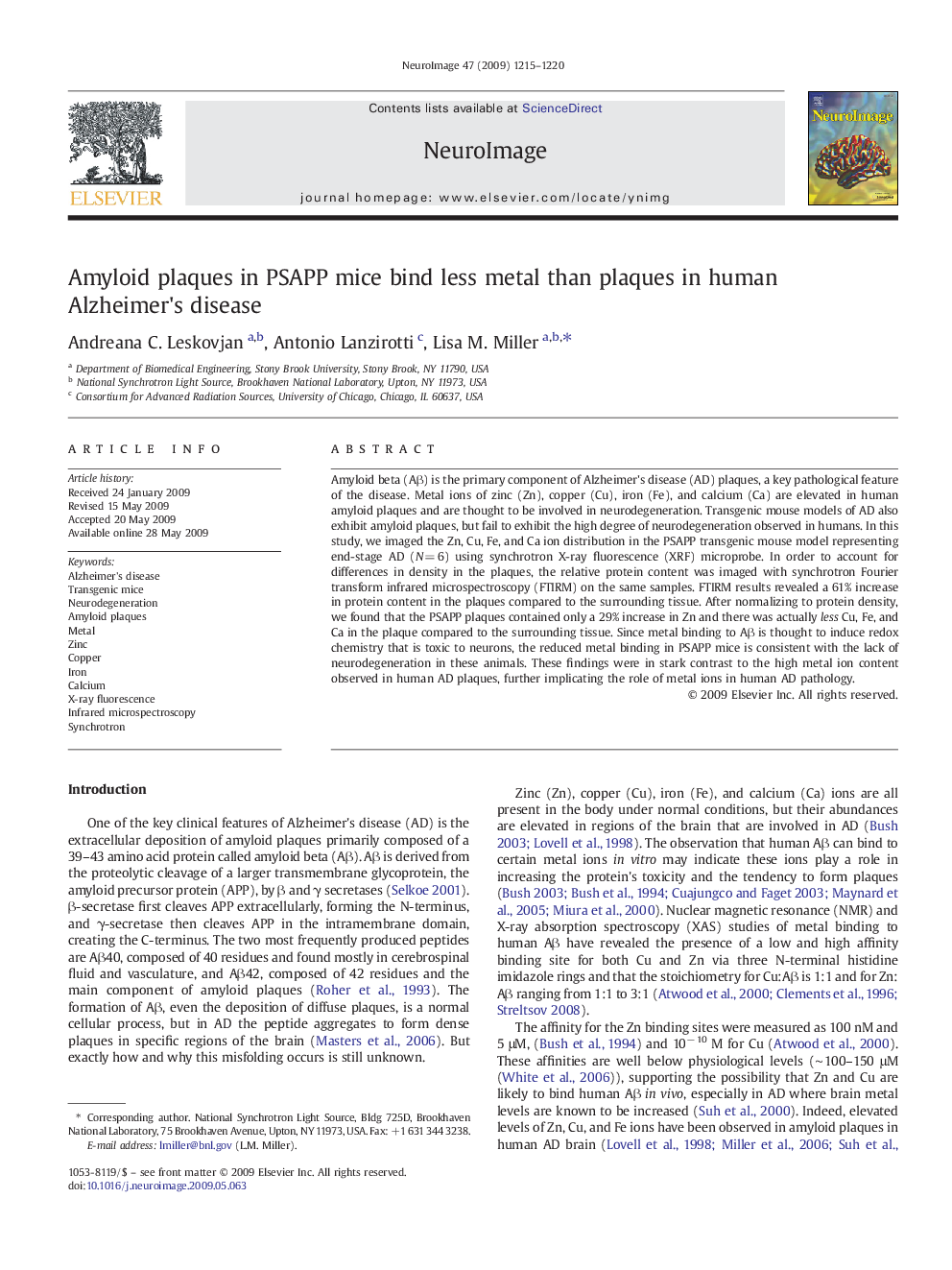| کد مقاله | کد نشریه | سال انتشار | مقاله انگلیسی | نسخه تمام متن |
|---|---|---|---|---|
| 6038471 | 1188803 | 2009 | 6 صفحه PDF | دانلود رایگان |
عنوان انگلیسی مقاله ISI
Amyloid plaques in PSAPP mice bind less metal than plaques in human Alzheimer's disease
دانلود مقاله + سفارش ترجمه
دانلود مقاله ISI انگلیسی
رایگان برای ایرانیان
کلمات کلیدی
Iron - آهنAlzheimer's disease - بیماری آلزایمرNeurodegeneration - تولید نوروژنیکSynchrotron - سنکروترونZinc - فلز رویMetal - فلز، فلزیX-ray fluorescence - فلورسانس اشعه ایکسCopper - مسTransgenic mice - موش ترانس ژنیکInfrared microspectroscopy - میکروسفروسکوپ مادون قرمزAmyloid plaques - پلاک آمیلوئیدCalcium - کلسیم
موضوعات مرتبط
علوم زیستی و بیوفناوری
علم عصب شناسی
علوم اعصاب شناختی
پیش نمایش صفحه اول مقاله

چکیده انگلیسی
Amyloid beta (Aβ) is the primary component of Alzheimer's disease (AD) plaques, a key pathological feature of the disease. Metal ions of zinc (Zn), copper (Cu), iron (Fe), and calcium (Ca) are elevated in human amyloid plaques and are thought to be involved in neurodegeneration. Transgenic mouse models of AD also exhibit amyloid plaques, but fail to exhibit the high degree of neurodegeneration observed in humans. In this study, we imaged the Zn, Cu, Fe, and Ca ion distribution in the PSAPP transgenic mouse model representing end-stage AD (N = 6) using synchrotron X-ray fluorescence (XRF) microprobe. In order to account for differences in density in the plaques, the relative protein content was imaged with synchrotron Fourier transform infrared microspectroscopy (FTIRM) on the same samples. FTIRM results revealed a 61% increase in protein content in the plaques compared to the surrounding tissue. After normalizing to protein density, we found that the PSAPP plaques contained only a 29% increase in Zn and there was actually less Cu, Fe, and Ca in the plaque compared to the surrounding tissue. Since metal binding to Aβ is thought to induce redox chemistry that is toxic to neurons, the reduced metal binding in PSAPP mice is consistent with the lack of neurodegeneration in these animals. These findings were in stark contrast to the high metal ion content observed in human AD plaques, further implicating the role of metal ions in human AD pathology.
ناشر
Database: Elsevier - ScienceDirect (ساینس دایرکت)
Journal: NeuroImage - Volume 47, Issue 4, 1 October 2009, Pages 1215-1220
Journal: NeuroImage - Volume 47, Issue 4, 1 October 2009, Pages 1215-1220
نویسندگان
Andreana C. Leskovjan, Antonio Lanzirotti, Lisa M. Miller,